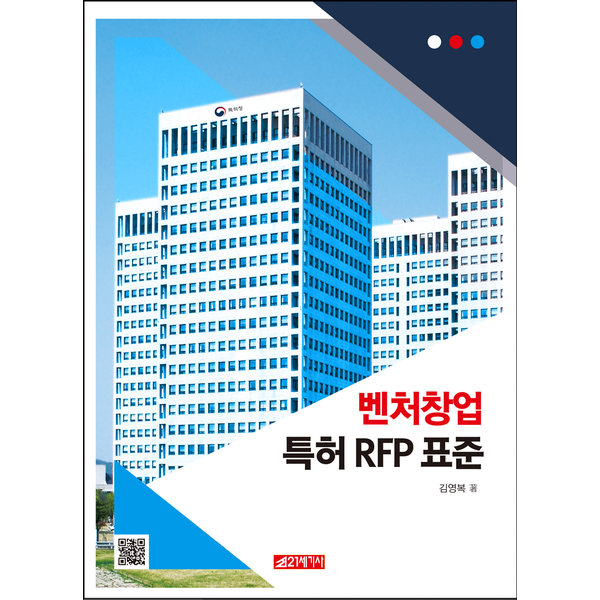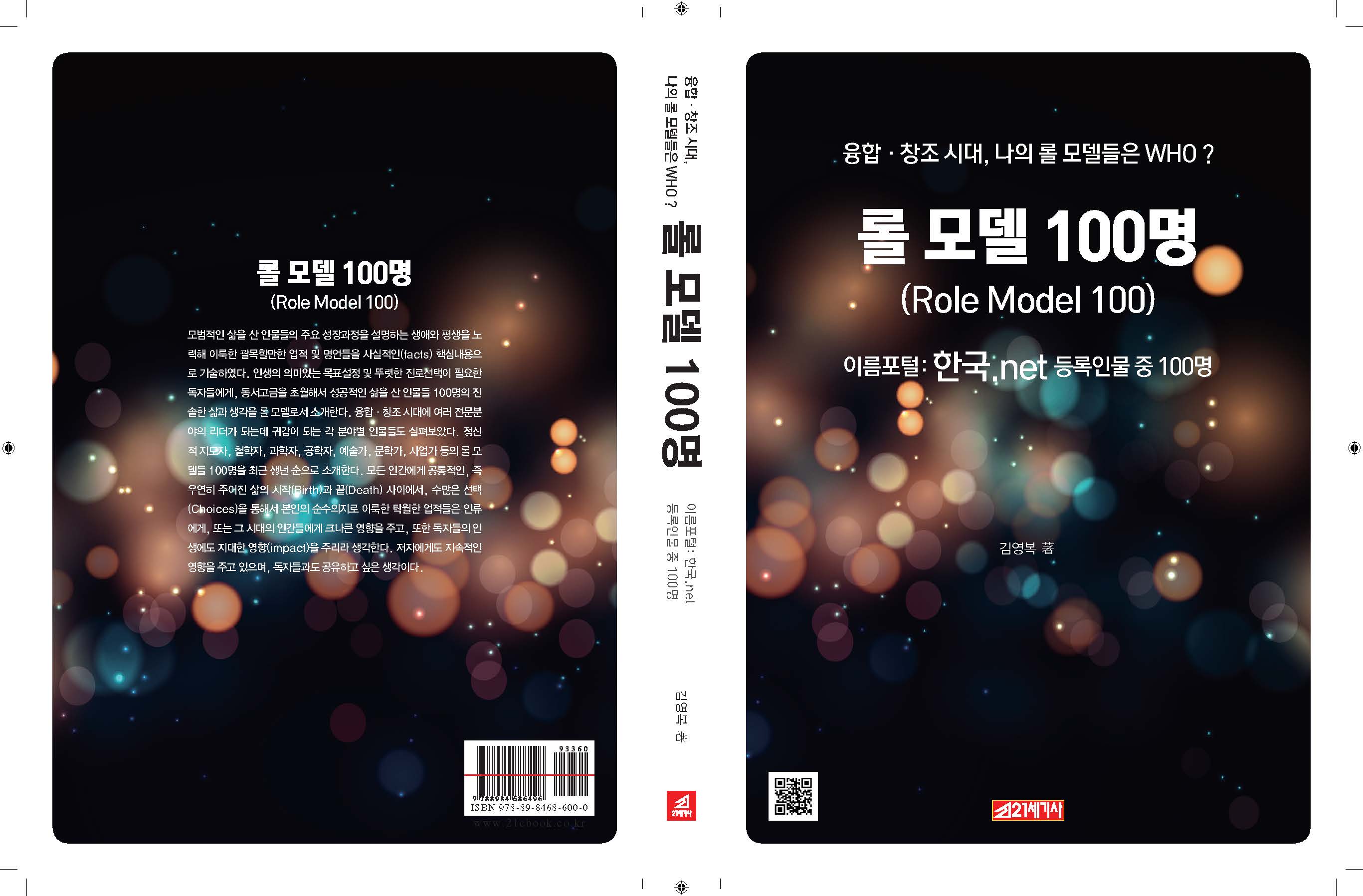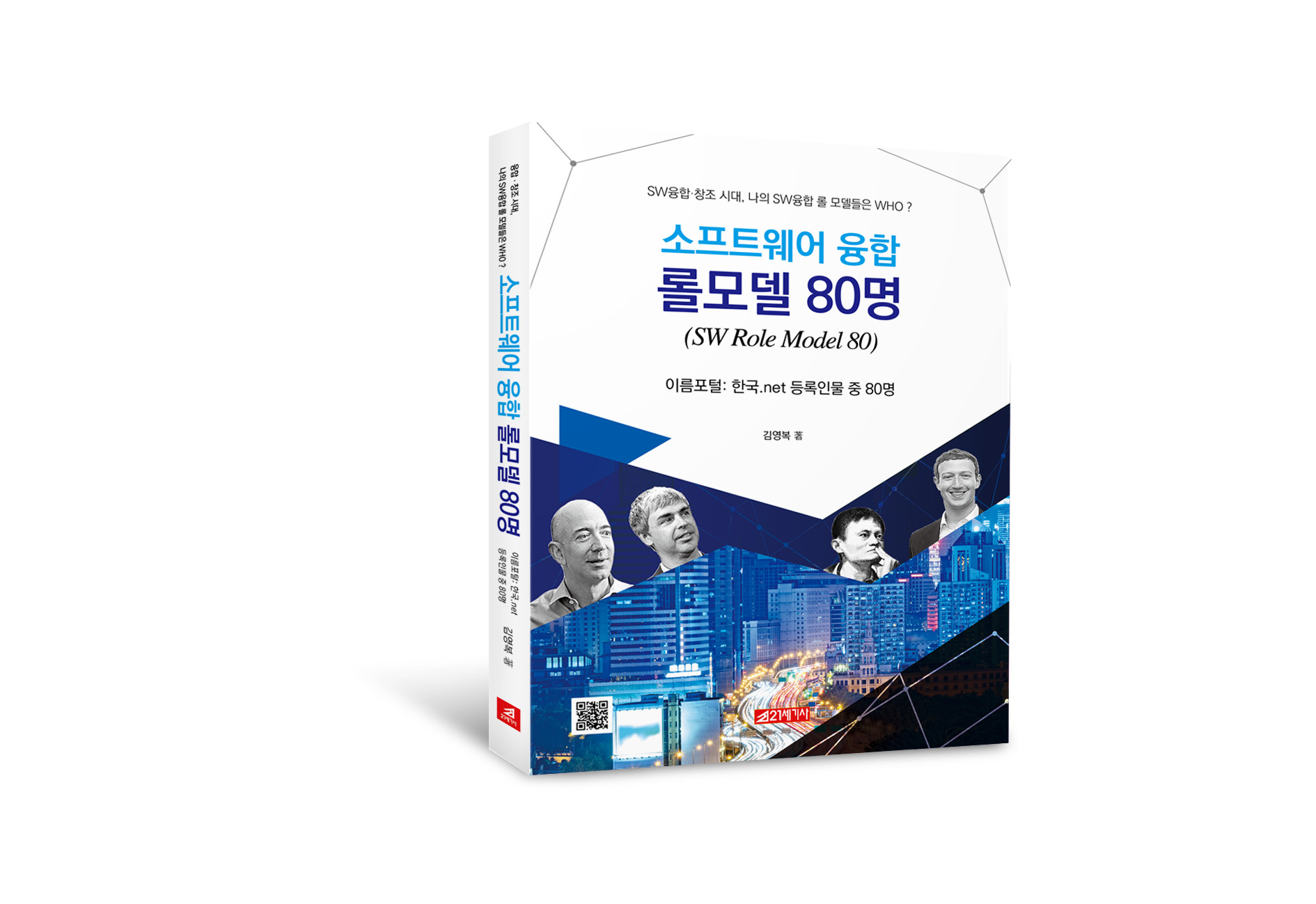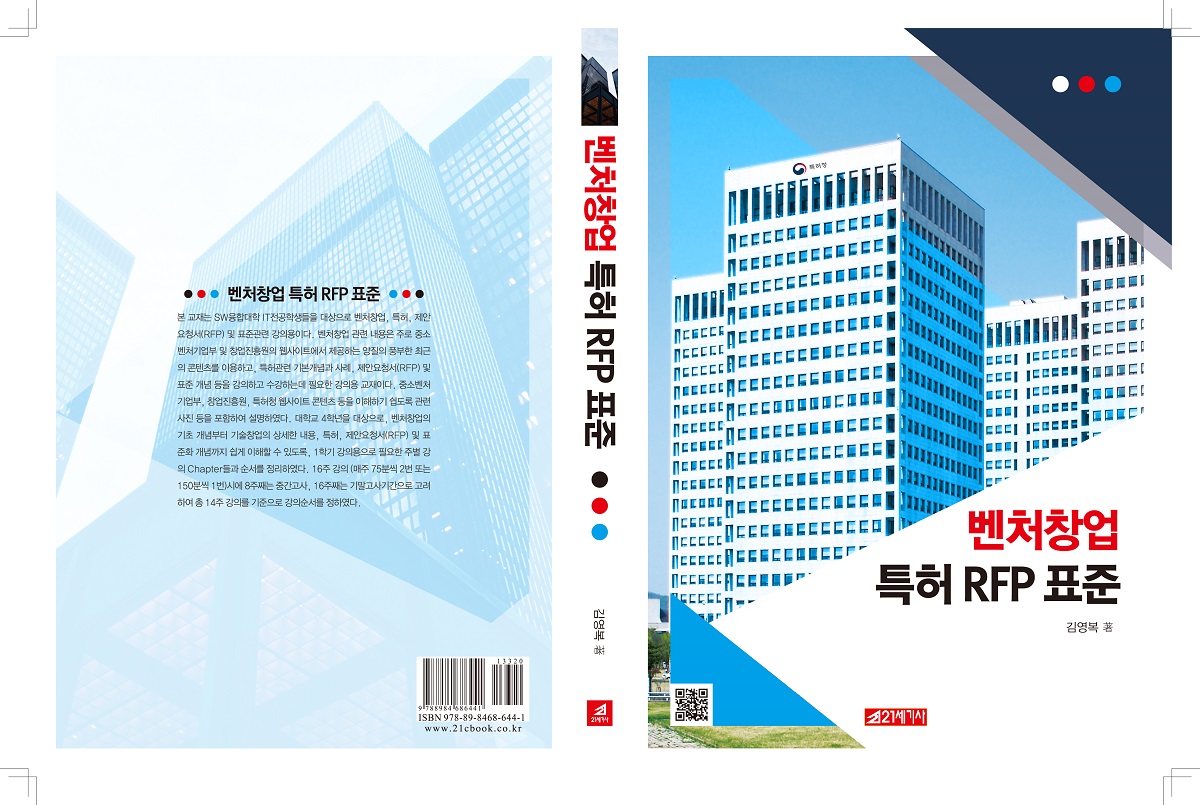[출생] 1850년 6월 6일
독일, Hessen-Kassel, Fulda
[Hesse, Germany]
[사망] 1918년 4월 20일 (67세)
미국 뉴욕 주 브루클린
[브루클린 브릿지와 덤보의 역사]
[국적] 독일
[독일 여행]
[분야] 물리학
[소속]
University of Karlsruhe
University of Marburg
스트라스부르 대학교
University of Tübingen
University of Würzburg
[출신 대학]
University of Marburg
베를린 훔볼트 대학교
[베를린 훔볼트대학교 Humboldt University of Berlin]
[주요 업적]
음극선관, Cat's whisker diode
[수상] 노벨 물리학상 (1909년)
[요약]
카를 페르디난트 브라운 (Karl Ferdinand Braun,
1850년 6월 6일 -1918년 4월 20일)은 독일의 물리학자이다.
전파를 받아 영상으로 바꾸는 '브라운관'을 발명하였다.
초기에는 진동이나 열역학에 관한 연구를 하다가
전자기학의 분야로 옮겼다.
옴의 법칙의 편의와 열기전력의 문제 등을 검토하였으며,
브라운의 전기계와 음극선 오실로그래프를 제작하였다.
그 외 무선전신의 연구에서도 여러 업적을 남겼다.
풀다 출생으로 마르부르크대학교·베를린대학교에서 공부하였다.
[베를린공과대학교]
초기에는 현(弦)이나 막대의 진동에 관한 연구와
열역학(熱力學)의 문제(르 샤틀리에 브라운의 법칙 등)에
관한 연구를 하다가,
전자기학(電磁氣學)의 분야로 옮겨,
옴의 법칙의 편의(偏倚)와 열기전력(熱起電力)의 문제 등을
검토하였으며,
실험상의 필요에서 브라운의 전기계(電氣計)와
음극선(陰極線)오실로그래프(브라운관, 1897)를 제작하였다.
[Karl Ferdinand Braun's 'Braun tube', 1897]
그 후 무선전신의 연구에 들어가 고주파에 의한
수중(水中)에서의 전파송달, 폐회로의 도입에 의한
정방향(定方向)에의 발신, 경사(傾斜) 빔 안테나에 의한
수신 등 여러 업적을 남겼다.
[생애 활동 및 업적 등]
칼 페르디난드 브라운(1850년 6월 6일~1918년 4월 20일)은
독일의 전기 기술자, 발명가, 물리학자이자
노벨 물리학상 수상자이다.
브라운은 라디오와 TV기술 발전에 크게 기여했으며
최초의 반도체를 만들었다.
"무선 전신 개발에 대한 기여"로 굴리엘모 마르코니와
1909년 노벨 물리학상을 공동 수상했으며,
선구적인 통신 및 텔레비전 회사 중 하나인
텔레풍켄(Telefunken)의 창립자였으며,
(Paul Gottlieb Nipkow와 같은 발명가와 공유)
둘 다 "TV의 아버지"로 불렸다.
"지금까지 제조된 모든 반도체의 증조부" 및
Marconi와 함께 무선 전신의 공동 아버지이다.
칼 브라운의 생애를 좀 더 상세히 소개하면,
1850년 6월 6일, 전파를 받아 영상으로 바꾸는
‘브라운관’을 개발한 독일의 물리학자
카를 페르디난트 브라운(Karl Ferdinand Braun)이 태어났다.
[독일, 풀다에 있는 페르디난드 브라운의 생가]
독일 중부 헤센주 풀다에서 태어난 브라운은
베를린대학교에서 박사학위를 취득했다.
1876년 마르부르크대학교의 원외교수가 되었고,
[살고 싶은 도시 마르부르크]
이후 슈트라스부르크대학교, 카를스루에공업대학,
튀빙겐대학교 등에서 강의했으며,
1895년에 슈트라스부르크대학교 물리학 교수와
물리연구소 소장이 됐다.
브라운의 최초 연구는 현(string)이나
탄성체 진동에 관한 것이었다.
또한 열 역학에 대한 연구로도 유명한데,
'르 샤틀리에·브라운의 법칙'을 세웠다.
그는 초기에 진동이나 열역학에 관한 연구를 하다가
이후 전자기학 분야로 옮겼다.
브라운 최대의 업적은 전기 공학에 관련된 연구다.
옴의 법칙이 성립되지 않는 경우에 대한 논문을 시작으로,
전위계나 음극선, 오실로그래프를 발명했다.
1897년 마침내 브라운관을 발명하는 역사적 연구성과를 거둔다.
브라운관 발명은 무선통신이 발전하는데 크게 기여했다.
또 이후 TV가 개발되는 데도 브라운관이 결정적인 도움이 됐다.
브라운관은 LCD, PDP 등의 평판 디스플레이가 등장하기 전까지
약 100년간 TV의 핵심 소재로 사용됐다.
브라운은 1898년부터 무선통신 연구에 전념했고
고주파 전류를 이용해 수중에서 모스 부호를 보내는 실험이나
전파에 지향성을 갖게 하는 발신과 수신 실험을 했다.
1900년 9월 24일에 무선 전신 신호가 헬리고란트(Heligoland) 섬과
62km 거리에 걸쳐 정기적으로 교환되었다.
엘베강의 경선과 쿡스하펜의 해안국이
정규 무선 전신 서비스를 시작했다.
[1900년9월24일, Heligoland무선국: Bargman,Braun,전신기사]
[1903년 독일 베를린 거리 풍경]
무선통신 개발에 기여한 공로를 인정받아,
무선전신 연구의 업적으로 1909년 이탈리아의 G.마르코니와
함께 노벨물리학상을 받았다.
Guglielmo Marconi 마르코니
노벨상을 수상한 이후에도 연구는 계속했다.
1918년에 교수 겸 물리학연구소장이 된 브라운은
장거리 전신을 가능하게 하는 기술을 개발했다.
전파를 송신하는 회로 설계를 수정해 감쇄효과는 작고
강도는 높은 파동을 만들어 냈다.
Braun은 제1차 세계대전이 시작될 때
(미국이 전쟁에 참전하기 전) 미국에 가서,
[1900년대 뉴욕의 모습]
미국의 Sayville에 있는 Telefunken의 무선국에 대한
Marconi Corporation의 특허 청구에 관한 소송에서
변호인의 증인이 되었다.
[New York 1911년]
미국이 참전한 후 브라운은 구금 되었지만,
[찬조 "타향" K-Pop]
뉴욕 브루클린 내에서 자유롭게 이동할 수 있었다.
[찬조 "Nostalgia" 음악]
[찬조 "Nostalgia" K-Pop]
[찬조 "Nostalgia" Live on Broadway]
[브루클린 덤보]
브라운은 1918년 4월 20일, 전쟁이 끝나기 전에
브루클린에 있는 그의 집에서 67세를 일기로 사망했다.
[추모 "행복했다... 안녕" K-Pop]
[SID 칼 페르디난드 브라운 상]
1987년 정보 디스플레이 협회(Society for Information Display)는
디스플레이 기술의 뛰어난 기술적 성과에 수여하는
칼 페르디난드 브라운 상(Karl Ferdinand Braun Prize)을
제정했다.
[찬조 "당신의 이름" K-Pop]
--------------------------------------
[노벨상 시상 연설] (1909년 12월 10일)
전하, 그리고 신사 숙녀 여러분.
물리학 연구에서 많은 놀라운 결과들이 이루어집니다.
발견 당시에는 단지 이론적인 흥밋거리로만 여겨졌던 것들이
종종 인류의 진보에 가장 중요한 발명으로 증명되곤 합니다.
만약 이런 경향이 물리학에서 일반적으로 통용된다면
전기 분야에서는 더욱더 그렇다고 할 수 있습니다.
왕립과학원이 올해의 노벨 물리학상을 수여하는 발명과 발견 역시
처음에는 순수하게 이론적인 작업과 연구의 결과물이었습니다.
그러나 이 연구처럼 중요하고 신기원을 만든 연구도
시작 당시에는 누구도 실제로 응용될 것이라고
기대하지 않았습니다.
오늘 밤 우리는 무선전신의 대부분을 개발한 두 사람에게
노벨상을 수여합니다.
그러나 그 전에 수학과 실험물리에서 재기있고 천재적인 연구로
실용적인 응용의 장을 연 돌아가신 위대한 연구자들을 먼저
칭송해야 합니다.
먼저 독특한 통찰력을 가진 패러데이를 들 수 있습니다.
패러데이는 최초로 빛과 전기 사이에 밀접한 관계를
알아챈 사람입니다.
그다음으로는 자신의 야심찬 개념과 사고의 결과를
수학적인 언어로 변환시킨 맥스웰입니다.
마지막으로 자신이 스스로 수행한 고전적인 실험을 통해
전기와 빛의 새로운 개념이 현실에서 실재한다는 것을 밝힌
헤르츠입니다.
그러나 헤르츠의 실험 이전에도 과학자들은
충전된 축전지가 특정한 상황에서는 진동하는,
즉 앞뒤로 흐르는 전류의 형태로 방전된다는 것을
이미 알고 있었습니다.
그렇지만 이런 전기의 흐름이 진공에서는 빛의 속도로 전파되며
그 특성은 빛의 모든 특성과 동일한 파동운동,
다시 말하면 빛 그 자체라는 것을 헤르츠가 처음으로 증명했습니다.
이 발견은 1888년에 이루어진 것으로 아마도 지난 50년 동안
물리학에서 이루어진 가장 위대한 발견 중의 하나일 것입니다.
이 발견은 현대적인 의미에서 전기 과학과 무선전신의
토대를 만들었습니다.
그러나 작은 실험실에서 수 미터의 거리에 전기신호를 보내는 것과
매우 먼 거리까지 전기신호를 보내는 것은 매우 큰 차이가 있으며,
많은 장애들을 극복해야 합니다.
멀리 전기신호를 보내기 위해서는
먼저 전기의 산업적인 잠재력을 알고 수많은 어려움을
극복할 수 있는 사람이 필요하였습니다.
이러한 위대한 과업을 수행한 사람이
굴리엘모 마르코니 교수입니다.
이전에 많은 사람들이 장거리 무선통신을 연구했고 또한
전파산업 진흥에 필요한 조건들을 갖추었다 하더라도
처음 시도한 사람으로서의 영광은
마르코니 교수에게 주어져야 합니다.
마르코니 교수는 최초의 성공을 위해,
자신의 능력과 스스로 설정한 목표를 달성하기 위해
자신의 모든 에너지를 쏟아부었으며,
우리는 그 노력을 인정해야 합니다.
헤르츠파를 사용해 신호를 전송하는 실험은
1895년에 처음으로 수행되었습니다.
그 실험 후 14년 동안 무선통신은 계속 발전해
오늘날 매우 중요한 분야가 되었습니다.
1897년 당시 무선통신이 가능한 거리는 겨우
14~20킬로미터에 불과했습니다.
반면 오늘날의 무선통신은 수천 킬로미터 떨어진
구세계와 신세계를 넘나들고 있습니다.
대양을 항해하는 모든 거대한 증기선에는 모두
무선전신 장치가 있습니다.
그리고 큰 나라의 해군들은 무선전신 시스템을 사용합니다.
물론 큰 발명은 한 개인을 통해 이루어지지 않습니다.
오늘날 이룩한 놀라운 결과는
많은 사람들의 기여로 이루어졌습니다.
원래 마르코니가 개발한 송신시스템에는 약점이 있었습니다.
송신소에서 방출되는 전파는 상대적으로 약하며
연속해서 방출되는 일련의 파동으로 구성되어 있습니다.
이 전파의 진폭은 거리가 멀어지면서 급속하게 약화되는,
이른바 '감쇄 진동'입니다.
따라서 수신소에서 검출된 파동은
매우 약할 수 밖에 없습니다.
게다가 다른 여러 송신소에서 만들어지는 파동들과
간섭현상이 일어나기 때문에 수신소에서 받는 전파는
더욱 약해지게 됩니다.
페르디난트 브라운 교수가 이 문제를 해결했습니다.
브라운 교수는 전파를 송신하는 회로의 설계를 수정해
감쇄 효과가 매우 작은, 높은 강도의 파동을 만들어 냈습니다.
이른바 '장거리 전신'은 브라운 교수의 방식으로만 가능했습니다.
이 방식을 사용하면 송신소에서 만들어지는 전파는 공명을 통해
수신소에 가능한 최대의 효과를 줄 수 있습니다.
그 밖에 다른 장점은 송신소에서 사용하는 주파수를 가진
파동만을 수신소에서 효과적으로 검출할 수 있다는 것입니다.
이와 같이 회로 설계가 개선되었기 때문에 무선전신이
광범위하게 사용될 수 있었습니다.
과학자들과 공학자들은 무선전신을 개발하기 위해
쉬지 않고 노력했습니다.
무선전신의 발전이 어떤 결과를 낳을지는 우리도 모릅니다.
그러나 이미 이루어진 결과들만 보아도 가장 좋은 방향으로
확장되었습니다.
전선과 같이 고정된 길에 제한되지 않고
공간 제한없이 멀리 떨어진 바다와 사막까지
연결망을 만드는 것이 가능합니다.
무선통신은 우리 시대의 가장 훌륭한 과학적인 발견 가운데
하나에서 꽃 핀 놀랄 만한 실용적 발명입니다.
스웨덴 왕립과학원 원장 H. 힐데브란드 (1909년 12월 10일)
(당신에게 노벨상을 수여합니다: 노벨 물리학상, 노벨 재단)
[찬조 "인생찬가" K-Pop]
[찬조 "영웅" 교향곡]
-------------------------------
[챗 GPT 답변에 오류(hallucination: 환각 등)가 있으니,
단순 재미로만 참조바람] (from https://chat.openai.com/chat)
카를 페르디난트 브라운(Karl Ferdinand Braun, 물리학자)이
제일 좋아했던 역사적 인물은?
카를 페르디난트 브라운은 고대 그리스의 철학자 플라톤(Plato)을
매우 존경하고 좋아했습니다.
그는 플라톤의 철학에서 창조주와 천상계의 이상적인 세계에 대한
믿음에서 영감을 받았습니다.
이러한 영향은 그의 과학 연구와 발명에도 큰 영향을 미쳤습니다.
카를 페르디난트 브라운(Karl Ferdinand Braun, 물리학자)이
좋아할만한 한국의 트로트나 발라드 노래 제목은 무엇일까?
카를 페르디난트 브라운의 취향과 관련된 정보는
알려져 있지 않지만,
한국의 대표적인 트로트 가수 중 한 명인
나훈아의 "내일이 오면"과 같은 발라드 노래는
다양한 연령층에서 인기가 많으며,
이전 세대에서부터 사랑받는 곡 중 하나입니다.
[찬조 K-Pop]
[찬조 K-Pop]
[찬조 K-Pop]
카를 페르디난트 브라운(Karl Ferdinand Braun, 물리학자)이
경험한 재미있는 일화(episode)는?
카를 페르디난트 브라운의 인생에서 재미있는 일화 중 하나는
무선 전신조명 시스템을 개발하면서 겪은 일입니다.
브라운은 무선 전신조명 시스템의 실험 중에
자신의 머리카락이 발광하는 것을 발견했습니다.
그는 머리카락이 무선 전자파를 수신하고 있다는 것을 깨달았고,
이를 바탕으로 무선 전파의 발견과 무선 통신 분야의
개척으로 이어졌습니다.
이러한 경험으로 브라운은 무선 전파의 발견과
무선 통신 분야에서의 업적으로 인정받았으며,
1909년에는 무선 전신조명 시스템의 개발로
노벨 물리학상을 수상하게 됩니다.
카를 페르디난트 브라운(Karl Ferdinand Braun, 물리학자)은
얼마나 양심적인 사람일까?
카를 페르디난트 브라운은 그의 연구와 발명에 있어서
매우 양심적이었습니다.
그는 무선 전신조명 시스템을 개발할 때,
이를 상업적인 목적으로 이용하지 않겠다는 다짐을 하였습니다.
이러한 다짐은 그의 시대에 상업적인 목적으로 발명품을
이용하는 것이 일반적이었던 시절에 있어서
매우 귀중한 것이었습니다.
그의 양심적인 태도는 그가 무선 전파의 발견과
무선 통신 분야에서의 업적을 인정받을 수 있게 해주었으며,
이러한 업적으로 그는 1909년에 노벨 물리학상을 수상하게 되었습니다.
카를 페르디난트 브라운(Karl Ferdinand Braun, 물리학자)의
양심(Conscience) 등급(Grade)을
A(매우 우수), B(우수), C(보통), D(낮음) 로 Grading 한다면,
카를 페르디난트 브라운(Karl Ferdinand Braun, 물리학자)의
양심등급(Conscience Grade)은?
카를 페르디난트 브라운은 그의 연구와 발명에 있어서
매우 높은 양심성을 보인 인물 중 한 명입니다.
그는 무선 전신조명 시스템을 개발할 때,
이를 상업적인 목적으로 이용하지 않겠다는 다짐을 하였습니다.
이러한 다짐은 그의 시대에 상업적인 목적으로
발명품을 이용하는 것이 일반적이었던 시절에 있어서
매우 귀중한 것이었습니다.
또한, 그의 연구와 발명이 무선 통신 분야의 발전에
큰 기여를 했으며,
이러한 기여로 그는 노벨 물리학상을 수상하게 되었습니다.
따라서, 카를 페르디난트 브라운의 양심등급(Conscience Grade)은
A(매우 우수)일 것입니다.
[의식 지도]
[아래의 의식지도 수치 평가는 단순 재미로만 참조 바람]
(from https://gemini.google.com)
정신과 의사 데이비드 호킨스의
'의식 지도 Map of Consciousness' 에서
1에서 1000까지 수치로 평가했을때,
칼 브라운(1850년 6월 6일 ~ 1918년 4월 20일,
Karl Ferdinand Braun, 노벨상, Germany)의
의식지도 수치값은 ?
정신과 의사 데이비드 호킨스의
'의식 지도(Map of Consciousness)'에서 칼 브라운의
의식 지도 수치를 정확히 밝히는 것은 불가능합니다.
호킨스는 개인의 의식 수준을 1에서 1000까지 수치로
평가하는 체계를 제시했지만,
이는 주관적인 평가이며 객관적인 측정 지표가 아닙니다.
또한, 호킨스는 칼 브라운을 직접 평가하지 않았기 때문에
그의 의식 수준을 정확히 파악하기는 어렵습니다.
하지만, 칼 브라운의 업적과 생애를 통해
그의 의식 수준에 대한 어느 정도 추측은 가능합니다.
과학적 업적: 칼 브라운은 물리학자로서 음파 연구에
큰 공헌을 했습니다.
그는 1895년에 무선 전송 장치를 발명하여
무선 통신의 발전에 기여했습니다.
이는 획기적인 과학적 업적으로 평가받으며,
그의 높은 지적 능력과 문제 해결 능력을 보여줍니다.
사회적 영향:
브라운의 발명은 사회 전반에 걸쳐 큰 영향을 미쳤습니다.
무선 통신은 정보 전달 방식을 혁신하고, 대중 매체, 항공, 해운 등
다양한 분야의 발전을 촉진했습니다.
그의 업적은 인류 문명의 발전에 기여했다고 평가받으며,
그의 사회적 책임감과 공헌 의식을 보여줍니다.
개인적 가치관:
브라운은 독일 프로테스탄트 가정에서 태어나 자랐으며,
그의 가치관은 기독교적 신앙에 기반했습니다.
그는 진실과 정의를 추구했으며,
빈곤층을 돕는 데 관심을 가졌습니다.
그의 개인적 가치관은 그의 높은 도덕성과 이타주의를 보여줍니다.
이러한 요소들을 종합적으로 고려했을 때,
칼 브라운의 의식 수준은 호킨스의 의식 지도에서
500에서 600 사이에 위치할 가능성이 높다고 추측됩니다.
하지만, 이는あくまで 추측일 뿐이며,
그의 정확한 의식 수준을 알기 위해서는
더 많은 정보와 연구가 필요합니다.
[의식 지도]
--------------------------------------
[The Nobel Prize in Physics 1909]
The Nobel Prize in Physics 1909 was awarded jointly
to Guglielmo Marconi and Karl Ferdinand Braun
"in recognition of their contributions to the development
of wireless telegraphy".
Born: 6 June 1850, Fulda, Hesse-Kassel (now Germany)
Died: 20 April 1918, Brooklyn, NY, USA
Affiliation at the time of the award:
Strasbourg University, Strasbourg, Alsace (then Germany, now France)
Prize motivation: "in recognition of their contributions
to the development of wireless telegraphy."
Prize share: 1/2
[Work]
In the late 1880s a previously unknown type of
radiation was discovered - radio waves.
It was found to have the same nature as light,
but with a greater wavelength. Various physicists
and technicians investigated whether radio waves could be
used to transmit signals.
Ferdinand Braun contributed to wireless signal transfer technology
in several ways.
In the late 1890s, he developed the electronics
in transmitters to reduce signal weakening and
disruptions between different transmitters.
Guglielmo Marconi
The Nobel Prize in Physics 1909
Born: 25 April 1874, Bologna, Italy
Died: 20 July 1937, Rome, Italy
Affiliation at the time of the award:
Marconi Wireless Telegraph Co. Ltd., London, United Kingdom
Prize motivation: "in recognition of their contributions
to the development of wireless telegraphy."
Prize share: 1/2
[Work]
In the late 1880s a previously unknown type of
radiation was discovered - radio waves.
It was found to have the same nature as light,
but with a greater wavelength.
Various physicists and technicians investigated
whether radio waves could be used to transmit signals.
In 1895, Guglielmo Marconi used radio waves
to transmit signals over a distance of several kilometers.
He developed the technology in subsequent years
to achieve greater range.
The foundation for both wireless telegraphy and radio had been laid.
**************************************
[Award ceremony speech]
Presentation Speech by the former Rector General of
National Antiquities H. Hildebrand,
President of the Royal Swedish Academy of Sciences,
on December 10, 1909
Your Majesty, Your Royal Highnesses, Ladies and Gentlemen.
Research in physics has provided us with many surprises.
Discoveries which at first seemed to have but
theoretical interest have often led to inventions
of the greatest importance to the advancement of mankind.
And if this holds good for physics in general,
it is even more true in the case of research
in the field of electricity.
The discoveries and inventions for which the Royal Academy
of Sciences has decided to award this year’s Nobel Prize
for Physics, also have their origin in purely theoretical work
and study. Important and epoch-making, however,
as these were in their particular fields,
no one could have guessed at the start that
they would lead to the practical applications witnessed later.
While we are, this evening, conferring Nobel’s Prize upon
two of the men who have contributed most to the development
of wireless telegraphy,
we must first register our admiration for
those great research workers, now dead,
who through their brilliant and gifted work
in the fields of mathematical and experimental physics,
opened up the path to great practical applications.
It was Faraday with his unique penetrating power
of mind, who first suspected a close connection
between the phenomena of light and electricity,
and it was Maxwell who transformed his bold concepts
and thoughts into mathematical language, and finally,
it was Hertz who through his classical experiments showed
that the new ideas as to the nature of electricity
and light had a real basis in fact.
To be sure, it was already well known before Hertz’s time,
that a capacitor charged with electricity can under certain circumstances
discharge itself oscillatorily, that is to say
, by electric currents passing to and fro.
Hertz, however, was the first to demonstrate
that the effects of these currents propagate themselves
in space with the velocity of light, thereby producing
a wave motion having all the distinguishing characteristics
of light. This discovery – perhaps the greatest
in the field of physics throughout
the last half-century – was made in 1888.
It forms the foundation, not only for modern science
of electricity, but also for wireless telegraphy.
But it was still a great step from laboratory trials
in miniature where the electrical waves could be traced
over but a small number of metres,
to the transmission of signals over great distances.
A man was needed who was able to grasp the potentialities
of the enterprise and who could overcome
all the various difficulties which stood
in the way of the practical realization of the idea.
The carrying out of this great task was reserved
for Guglielmo Marconi.
Even when taking into account previous attempts
at this work and the fact that the conditions
and prerequisites for the feasibility of
this enterprise were already given, the honour of
the first trials is nevertheless due, by and large,
to Marconi, and we must freely acknowledge
that the first success was gained as a result
of his ability to shape the whole thing into a practical,
usable system, added to his inflexible energy
with which he pursued his self appointed aim.
Marconi’s first experiment to transmit a signal by means
of Hertzian waves was carried out in 1895.
During the 14 years which have elapsed since then,
wireless telegraphy has progressed without pause
until it has attained the great importance it possesses today.
In 1897 it was still only possible to effect
a wireless communication over a distance of 14-20 km.
Today, electrical waves are despatched between the Old
and the New World, all the larger ocean-going steamers
have their own wireless telegraphy equipment on board,
and every Navy of significance uses a system of
wireless telegraphy.
The development of a great invention seldom occurs
through one individual man, and many forces
have contributed to the remarkable results now achieved.
Marconi’s original system had its weak points.
The electrical oscillations sent out from
the transmitting station were relatively weak and
consisted of wave-series following each other,
of which the amplitude rapidly fell-so-called
“damped oscillations”.
A result of this was that the waves had a very weak effect
at the receiving station, with the further result
that waves from various other transmitting stations
readily interfered, thus acting disturbing
at the receiving station. It is due above all
to the inspired work of Professor Ferdinand Braun
that this unsatisfactory state of affairs was overcome.
Braun made a modification in the layout of the circuit
for the despatch of electrical waves so that
it was possible to produce intense waves with
very little damping. It was only through this
that the so-called “long-distance telegraphy”
became possible, where the oscillations from
the transmitting station, as a result of resonance,
could exert the maximum possible effect
upon the receiving station.
The further advantage was obtained that
in the main only waves of the frequency used by
the transmitting station were effective at
the receiving station.
It is only through the introduction of these improvements
that the magnificent results in the use of wireless telegraphy
have been attained in recent times.
Research workers and engineers toil unceasingly
on the development of wireless telegraphy.
Where this development can lead, we know not.
However, with the results already achieved, telegraphy
over wires has been extended by this invention
in the most fortunate way. Independent of fixed
conductor routes and independent of space,
we can produce connections between far-distant places,
over far-reaching waters and deserts.
This is the magnificent practical invention which has flowered
upon one of the most brilliant scientific discovery of our time!
--------------------------------------
Karl Ferdinand Braun
[Born] 6 June 1850
Fulda, Electorate of Hessen, Germany
[Died] 20 April 1918 (aged 67)
Brooklyn, New York, U.S.
[Nationality] German
[Alma mater]
University of Marburg,
University of Berlin
[Known for]
Cathode ray tube, Cat's whisker diode
[Awards]
Nobel Prize in Physics (1909)
Scientific career
[Fields] Physics
[Institutions]
University of Karlsruhe,
University of Marburg,
University of Strassburg,
University of Tübingen,
University of Würzburg
Karl Ferdinand Braun (6 June 1850 – 20 April 1918)
was a German inventor, physicist and Nobel laureate
in physics. Braun contributed significantly to
the development of radio and television technology:
he shared with Guglielmo Marconi the 1909 Nobel Prize in Physics.
[Biography]
Braun was born in Fulda, Germany,
and educated at the University of Marburg
and received a Ph.D. from the University of Berlin in 1872.
In 1874 he discovered that a point-contact
semiconductor rectifies alternating current.
He became director of the Physical Institute and
professor of physics at the University of Strassburg in 1895.
In 1897 he built the first cathode-ray tube (CRT)
and cathode ray tube oscilloscope. CRT became
the cornerstone in developing fully electronic television.
In the early 21-st century the CRT technology started to be
replaced by flat screen technologies
(such as liquid crystal display (LCD),
light emitting diode (LED) and plasma displays)
on television sets and computer monitors.
The CRT is still called the "Braun tube" in German-
speaking countries (Braunsche Röhre) and
in Japan (ブラウン管: Buraun-kan).
During the development of radio, he also worked
on wireless telegraphy. In 1897 Braun joined the line
of wireless pioneers. His major contributions were
the introduction of a closed tuned circuit in
the generating part of the transmitter,
and its separation from the radiating part (the antenna)
by means of inductive coupling, and later
on the usage of crystals for receiving purposes.
Wireless telegraphy claimed Dr. Braun's full attention
in 1898, and for many years after that he applied
himself almost exclusively to the task of
solving its problems.
Dr. Braun had written extensively on wireless
subjects and was well known through his many
contributions to the
Electrician and other scientific journals.
In 1899, he would apply for the patents,
Electro telegraphy by means of condensers and induction coils
and Wireless electro transmission of signals over surfaces.
Around 1898, he invented a crystal diode rectifier
or cat's whisker diode. Pioneers working on wireless
devices eventually came to a limit of distance they could cover.
Connecting the antenna directly to the spark
gap produced only a heavily damped pulse train.
There were only a few cycles before oscillations ceased.
oscillation because the energy encountered less
losses swinging between coil and Leyden Jars.
And by means of inductive antenna coupling
the radiator was better matched to the generator.
The resultant stronger and less bandwidth consuming
signals bridged a much longer distance.
Braun invented the phased array antenna in 1905.
He described in his Nobel Prize lecture how he carefully
arranged three antennas to transmit a directional signal.
This invention led to the development of radar, smart
antennas, and MIMO.
Braun's British patent on tuning was used by Marconi
in many of his tuning patents.
Guglielmo Marconi used Braun's patents (among others).
Marconi would later admit to Braun himself
that he had "borrowed" portions of Braun's work.
In 1909 Braun shared the Nobel Prize for physics with
Marconi for "contributions to the development
of wireless telegraphy."
The prize awarded to Braun in 1909 depicts this design.
Braun experimented at first at the University of Strasbourg.
Not before long he bridged a distance of 42 km
to the city of Mutzig. In spring 1899 Braun, accompanied
by his colleagues Cantor and Zenneck, went
to Cuxhaven to continue their experiments at the North Sea.
On 24 September 1900 radio telegraphy
signals were exchanged regularly with the island of
Heligoland over a distance of 62 km.
Light vessels in the river Elbe and a coast station
at Cuxhaven commenced a regular radio telegraph service.
Braun went to the United States at the beginning
of World War I (before the U.S. had entered the war)
to help defend the German wireless station
at Sayville, New York, against attacks
by the British-controlled Marconi Corporation.
After the US entered the war, Braun was detained, but could
move freely within Brooklyn, New York.
Braun died in his house in Brooklyn,
before the war ended in 1918.
[SID Karl Ferdinand Braun Prize]
In 1987 the Society for Information Display created
the Karl Ferdinand Braun Prize, awarded for an outstanding
technical achievement in display technology.
(from naver.com 두산백과 wikipedia.org 네이버 지식백과 등)
[Map of Consciousness]
Braun tube, Ancestor(TV, Semiconductor), Influence(++)~
(PIG: time-variant)
Positive Influence GRADE (PIG): A
(MoC: Map of Consciousness) 의식 지도
MoC(의식 수준): 500~600






